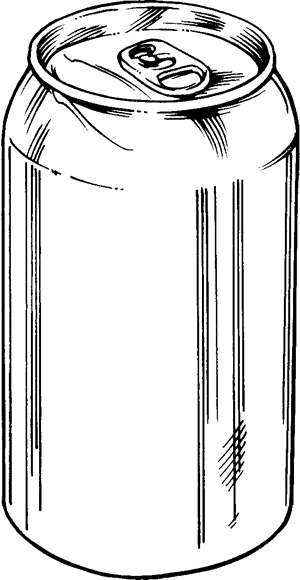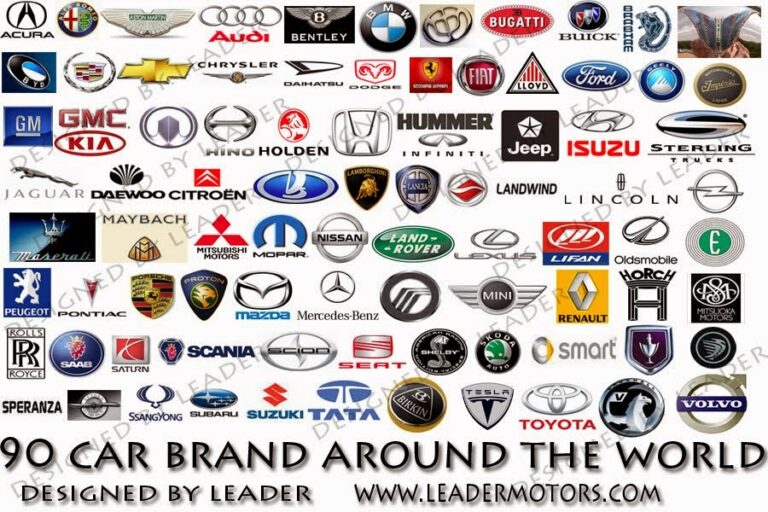Car Brand Stickers: More Than Just a Mark
Car Brand Stickers: More Than Just a Mark cars.truckstrend.com
In the intricate tapestry of automotive design and personalization, car brand stickers stand as surprisingly significant elements. Far from mere decorative add-ons, these decals, emblems, and badges are potent symbols of identity, status, and sometimes, even community. From the gleaming chrome logo adorning the grille of a luxury sedan to the subtle vinyl decal proclaiming allegiance to a specific automotive subculture, car brand stickers tell a story. They are the visual shorthand for an entire legacy of engineering, design, and marketing, instantly communicating a vehicle’s origin, model, and often, its owner’s aesthetic preferences or aspirations. Understanding these ubiquitous markers goes beyond simple recognition; it delves into the psychology of branding, the art of personalization, and the practicalities of automotive care. This comprehensive guide will explore every facet of car brand stickers, from their diverse forms and functions to their installation, maintenance, and broader implications in the automotive world.
Car Brand Stickers: More Than Just a Mark
The Anatomy of Car Brand Stickers: More Than Just a Logo
Car brand stickers come in a surprising array of forms, each designed for specific purposes and aesthetic impacts. Understanding their physical characteristics and origins is key to appreciating their role.
Types and Materials
At their core, car brand stickers can be broadly categorized into two main types:
-
OEM (Original Equipment Manufacturer) Emblems/Badges: These are the factory-installed logos and lettering that come with the vehicle. They are integral to the car’s identity and are typically three-dimensional.
- Materials: Often made from ABS plastic (chrome-plated or painted), metal alloys (aluminum, zinc), or sometimes even carbon fiber for high-performance models. They feature strong automotive-grade adhesives for permanent attachment.
- Placement: Usually found on the grille, trunk lid, fenders, and sometimes interior elements like the steering wheel or dashboard.


Aftermarket Decals/Stickers: These are non-factory additions, purchased and applied by the owner for customization or repair. They are predominantly two-dimensional.
- Materials: Primarily high-performance vinyl (PVC). Different types of vinyl offer varying durability, flexibility, and finish:
- Cast Vinyl: Thinner, more durable (5-12 years), conforms well to curves, ideal for wraps and long-term decals.
- Calendered Vinyl: Thicker, less durable (3-6 years), more affordable, suitable for flat surfaces or short-term applications.
- Specialty Vinyls: Carbon fiber look, matte, gloss, metallic, reflective, chrome, holographic, and even glow-in-the-dark.

- Adhesive: Varies from temporary to permanent, designed to be paint-safe.
- Placement: Can be applied virtually anywhere on the vehicle’s exterior or interior, limited only by the owner’s imagination and local regulations.
- Materials: Primarily high-performance vinyl (PVC). Different types of vinyl offer varying durability, flexibility, and finish:
Manufacturing Processes
The creation of these identifiers is a precise process:
- OEM Emblems: Involve injection molding for plastic parts, die-casting for metal, followed by chrome plating, painting, or polishing. Precision cutting and adhesive application ensure a perfect fit.
- Aftermarket Decals: Typically created using large-format digital printers for complex designs or vinyl plotters (die-cutters) for single-color lettering and shapes. The vinyl is then weeded (excess material removed) and often covered with transfer tape for easy application.
Why Car Brand Stickers Matter: Functions and Meanings
The significance of car brand stickers extends far beyond simple identification. They serve multiple vital roles in the automotive ecosystem and human psychology.
- Brand Identity and Recognition: This is their primary function. A car’s badge instantly communicates its manufacturer, often conveying a sense of heritage, reliability, luxury, or sportiness associated with that brand. It’s a cornerstone of automotive branding, making vehicles instantly recognizable on the road.
- Status Symbol and Aspiration: For many, owning a car with a prestigious brand sticker (e.g., Mercedes-Benz, BMW, Porsche, Ferrari) is a significant status indicator. The emblem itself becomes a symbol of success, achievement, and aspiration, reflecting the owner’s taste and financial standing.
- Community and Belonging: Beyond individual status, brand stickers foster a sense of community. Owners of specific makes or models often form clubs and online groups, using brand-specific decals (like "Jeep Wave" or "Subaru Enthusiast" stickers) to identify fellow members and express shared passion. It’s a visible badge of belonging to a tribe.
- Personalization and Expression: While OEM stickers define the car’s origin, aftermarket stickers allow for deep personalization. Owners can add custom decals, club logos, racing stripes, or even humorous sayings, transforming a generic vehicle into a unique expression of their personality, hobbies, or beliefs. This is where the car truly becomes an extension of the self.
- Resale Value and Authenticity: Maintaining original OEM badges in good condition can positively impact a car’s resale value. It signals that the vehicle has been well-maintained and retains its original factory appearance. Conversely, missing or damaged badges can sometimes raise questions about a car’s history.
- Marketing and Advertising: Every car on the road with its brand sticker is a moving billboard. It reinforces brand presence, increases visibility, and serves as a constant reminder of the manufacturer’s existence and offerings.
Navigating the World of Car Brand Stickers: OEM vs. Aftermarket
Deciding between OEM and aftermarket solutions for car brand stickers depends on your objective, budget, and desired aesthetic.
OEM Stickers: The Authentic Choice
Pros:
- Authenticity: Guarantees the original look and feel of your vehicle, preserving its factory specifications.
- Perfect Fit: Designed precisely for your car’s make and model, ensuring seamless integration.
- Quality Assurance: Manufactured to the highest automotive standards, offering superior durability, finish, and adhesive strength.
- Preserves Originality: Crucial for collectors or those concerned with maintaining maximum resale value.
Cons:
- Limited Options: No room for customization beyond the original design.
- Higher Cost: Significantly more expensive than aftermarket alternatives.
- Availability: May require ordering from a dealership or authorized parts supplier, which can take time.
Where to Find: The most reliable sources are authorized dealerships, manufacturer’s parts websites, and reputable automotive parts distributors specializing in genuine OEM components. Be wary of online sellers claiming to offer "OEM" parts at suspiciously low prices.
Aftermarket Stickers: The World of Customization
Pros:
- Vast Customization: Unlimited design possibilities, colors, fonts, and finishes. You can create truly unique decals.
- Lower Cost: Generally much more affordable, especially for vinyl decals.
- Wide Availability: Easily accessible through online retailers, specialized decal shops, and local print services.
- Flexibility: Allows for temporary applications or frequent changes without significant financial commitment.
Cons:
- Variable Quality: Quality can range from excellent to very poor. Cheap vinyl can fade, crack, or peel quickly, and poor adhesive can damage paint upon removal.
- Potential Fit Issues: While custom-made, they may not integrate as seamlessly as OEM parts.
- Can Devalue Original Look: If poorly chosen or applied, aftermarket stickers can detract from a car’s aesthetics and potentially impact resale value.
Where to Find: Popular online marketplaces like Etsy, Amazon, eBay, and specialized automotive decal websites (e.g., Sticker Mule, Custom Decal, Vvivid Vinyl) are great starting points. For custom designs, local sign shops or vinyl wrap specialists can often create bespoke stickers. Always check seller reviews and product descriptions for material quality.
Installation and Maintenance: A Practical Guide
Proper installation and ongoing maintenance are crucial to ensuring your car brand stickers look great and last long.
Surface Preparation is Key
Before applying any sticker, the surface must be meticulously clean, dry, and free of wax, grease, or contaminants.
- Wash the Area: Use car soap and water to thoroughly clean the application area.
- Degrease: Wipe down the area with rubbing alcohol (isopropyl alcohol) or a dedicated automotive surface prep cleaner. This removes any residues that could compromise adhesion.
- Dry Completely: Ensure the surface is bone dry. Any moisture trapped underneath can lead to bubbles or peeling.
Application Methods for Vinyl Decals
-
Dry Application (Recommended for smaller decals):
- Position the decal using masking tape to create a "hinge" (tape one side down, lift the other, peel backing).
- Slowly peel off the backing paper, exposing the adhesive.
- Using a squeegee or credit card, firmly press the decal onto the surface, working from the taped hinge outwards to push out air bubbles.
- Carefully peel off the transfer tape at a sharp angle.
- Press down any edges or bubbles with your finger.
-
Wet Application (Recommended for larger decals or beginners):
- Mix a few drops of mild soap (e.g., baby shampoo) with water in a spray bottle.
- Spray the cleaned surface generously with the soap solution.
- Peel the decal backing and spray the adhesive side of the decal.
- Position the decal on the wet surface. The solution allows you to slide and reposition it.
- Once satisfied with the placement, use a squeegee to firmly push out the water and air bubbles, working from the center outwards.
- Allow time for the adhesive to cure (several hours to a day) before carefully peeling off the transfer tape.
Removing Stickers and Emblems
-
For Vinyl Decals:
- Heat: Use a heat gun or hairdryer on a low setting to warm the decal, softening the adhesive.
- Peel: Gently peel the decal off, starting from a corner. If it tears, reapply heat.
- Adhesive Residue: Use an automotive adhesive remover (like Goo Gone Automotive or dedicated tar/glue remover) and a microfiber cloth to clean any sticky residue.
- Clean: Wash the area with soap and water, then wax to protect the paint.
-
For OEM Emblems (3D badges):
- Heat: Warm the emblem with a heat gun or hairdryer to soften the adhesive.
- Fishing Line/Plastic Trim Tool: Slide a piece of fishing line or a thin plastic trim tool behind the emblem, working it back and forth to cut through the adhesive foam.
- Pry Gently: Once most of the adhesive is cut, gently pry off the emblem. Be extremely careful not to scratch the paint.
- Adhesive Residue: Remove remaining foam and adhesive with an automotive adhesive remover.
- Clean and Polish: Clean the area thoroughly and consider polishing the paint underneath, as it may have been protected from fading.
Maintenance Tips
- Gentle Washing: When washing your car, be gentle around stickers. Avoid high-pressure washers directly on the edges of decals, as this can lift them.
- Avoid Harsh Chemicals: Do not use abrasive cleaners, strong solvents, or petroleum-based products on or near stickers, especially vinyl, as they can cause fading, cracking, or peeling.
- Waxing: You can wax over most vinyl decals, but avoid products with abrasives. For OEM emblems, wax around them to maintain shine.
- UV Protection: Parking in shaded areas or using a car cover can help extend the life of both OEM and aftermarket stickers by reducing UV exposure.
Common Challenges and Solutions
Even with careful application and maintenance, challenges can arise with car brand stickers.
- Bubbles and Wrinkles: Often caused by improper application or trapped air/moisture.
- Solution: For small bubbles, gently prick them with a fine needle and smooth out the air. For larger issues, consider reapplication if the adhesive allows. Wet application minimizes this risk.
- Peeling and Fading: Can result from poor surface preparation, low-quality materials, or excessive UV exposure.
- Solution: Ensure thorough cleaning before application. Invest in high-quality cast vinyl for aftermarket decals. Consider UV-resistant coatings or clear laminates for custom designs. Replace faded decals.
- Damage During Removal: Scratches, paint chips, or adhesive residue.
- Solution: Patience is key. Always use heat to soften adhesive. For emblems, use non-marring plastic tools or fishing line. Use appropriate automotive adhesive removers, never harsh household chemicals.
- Counterfeit Stickers/Emblems: Poor quality replicas that don’t last or look authentic.
- Solution: Buy OEM parts from authorized dealers. For aftermarket, purchase from reputable vendors with good reviews. Inspect product images carefully and be wary of prices that seem too good to be true.
- Legality/Restrictions: Some jurisdictions may have rules regarding sticker placement that obstruct driver visibility (e.g., on windshields or side windows).
- Solution: Always check local traffic laws before applying stickers that could impede vision.
Price Table for Car Brand Stickers (Estimated Ranges)
Prices for car brand stickers vary widely based on type, brand, material, size, and customization. The following table provides general estimated ranges.
| Sticker Type | Description | Estimated Price Range (USD) |
|---|---|---|
| OEM Emblems (Small) | Single letters, numbers (e.g., "S," "3," "V6"), or small specific model identifiers. | $15 – $50 |
| OEM Emblems (Medium/Large) | Full brand logos (e.g., Mercedes-Benz star, BMW roundel), model names (e.g., "Camry," "F-150"). | $40 – $200+ |
| OEM Specialty Emblems | Performance badges (e.g., "AMG," "M," "Type R"), limited edition, or rare classic car badges. | $100 – $500+ |
| Aftermarket Vinyl Decals (Small) | Up to 6-inch length, simple designs (e.g., club logos, small sayings, flag decals). | $5 – $20 |
| Aftermarket Vinyl Decals (Medium) | 6-18 inch length, more complex designs (e.g., window banners, larger club decals). | $15 – $50 |
| Aftermarket Vinyl Decals (Large/Custom) | Over 18 inches, custom graphics, racing stripes, full side graphics, or elaborate designs. | $50 – $300+ |
| Aftermarket 3D/Metal Emblems | Replicas of OEM badges, custom 3D logos, often made from plastic or lightweight metal. | $20 – $80 |
| Installation Service | Professional application service for large decals, wraps, or emblem replacement (labor only). | $50 – $250+ (per area) |
Note: Prices are estimates and can fluctuate significantly based on supplier, region, and specific vehicle model rarity.
Frequently Asked Questions (FAQ)
1. Are all car brand stickers removable?
Most car brand stickers, both OEM and aftermarket, are designed to be removable. However, the ease of removal and potential for residue or paint damage varies depending on the adhesive strength, sticker material, and how long it has been applied. OEM emblems often use strong foam adhesive and require more effort.
2. Will removing a sticker damage my car’s paint?
If done carefully and correctly, removing a sticker should not damage the underlying paint. The key is to use heat to soften the adhesive and appropriate adhesive removers. Aggressive scraping or using harsh chemicals can cause damage. Paint that has been heavily faded by sun exposure around the sticker might reveal a lighter, unfaded area underneath.
3. How long do car brand stickers last?
OEM emblems are designed to last the lifetime of the vehicle. Aftermarket vinyl decals vary: cast vinyl can last 5-12 years, while cheaper calendered vinyl might only last 3-6 years. Factors like sun exposure, climate, and car wash frequency impact longevity.
4. Can I put an OEM sticker from one brand on another car?
While physically possible, it’s generally frowned upon and can be seen as deceptive or tacky. It doesn’t enhance the vehicle’s value and might even be misleading to potential buyers.
5. What’s the best way to clean around stickers?
Treat stickers as part of your car’s exterior. Use standard car wash soap and water. Avoid abrasive sponges directly on decals. For OEM emblems, use a soft brush to clean dirt trapped in crevices. Apply wax or sealant around them to protect the paint.
6. Do custom stickers affect resale value?
Generally, non-OEM custom stickers can negatively affect resale value, especially if they are large, polarizing, or poorly applied. Most buyers prefer a clean, factory look. It’s often advisable to remove custom decals before selling your vehicle.
7. What’s the difference between a decal and a sticker?
In common automotive parlance, the terms are often used interchangeably. However, technically, a "decal" often refers to a design that is transferred from one surface to another (like a vinyl graphic with transfer tape), while "sticker" can be a broader term for anything with an adhesive backing. "Emblem" or "badge" specifically refers to the more robust, often 3D, factory-installed logos.
Conclusion
Car brand stickers, whether the proud emblems of a manufacturer or the personalized decals of an owner, are miniature statements with significant impact. They serve as critical identifiers, symbols of status, and powerful tools for individual expression and community building. From the meticulous engineering behind an OEM badge to the creative freedom offered by aftermarket vinyl, these small elements contribute immensely to the visual language of our vehicles. By understanding their types, functions, and the best practices for their application and care, car enthusiasts and everyday drivers alike can appreciate the subtle yet profound role these stickers play in defining both the car and its driver. They are, truly, more than just a mark – they are a part of the automotive narrative.




